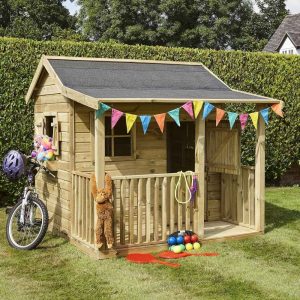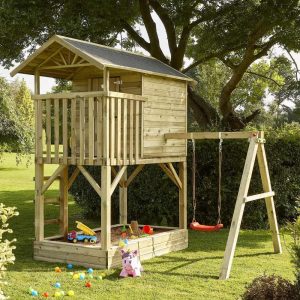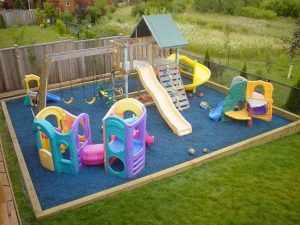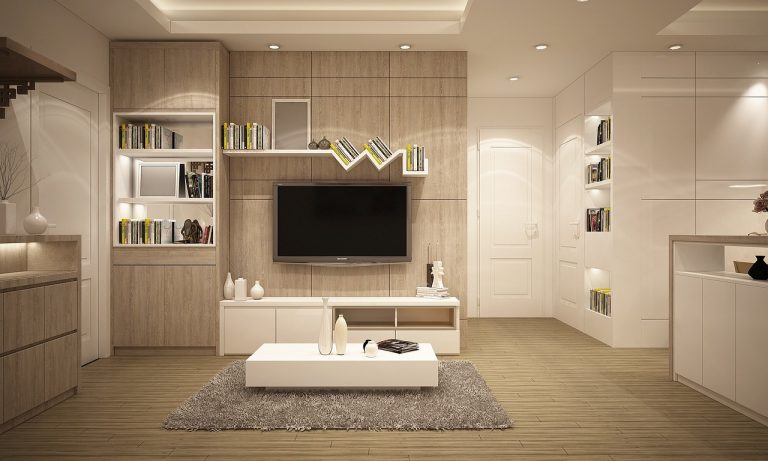If you’re looking to create a perfect outdoor play area for children, you’re in the right place! In this article, we will explore some fantastic DIY ideas to help you build an exciting and engaging outdoor play space that will keep little ones entertained for hours. From backyard forts to sensory gardens, we’ve got you covered with plenty of fun and creative options. So grab your tools and let’s get started on a project that will bring laughter and joy to your little ones.
Table of Contents
ToggleChoosing a Suitable Location
When it comes to creating an outdoor play area for children, one of the first things you need to consider is the location. Choosing a suitable space is crucial to ensure the safety and accessibility of the play area. Here are some factors to consider:
Considering available space
Begin by assessing the available space you have for the play area. Take into account the size and dimensions of the area and ensure it is large enough to accommodate various play equipment and structures. Adequate space is essential for children to engage in different activities and games without feeling cramped.
Assessing the safety of the area
Safety should be a top priority when selecting a location for the play area. Ensure that the area is free from any potential hazards such as sharp objects, steep slopes, or bodies of water. Also, consider the proximity of the play area to busy roads or other dangerous locations. It’s important to provide a safe environment where children can play without risks.
Determining the accessibility of the location
Consider how easily accessible the chosen location is for both children and parents. Ideally, it should be conveniently located within your property or close to the main living areas. Ensure that children can easily reach the play area with minimal supervision. A location that is visible from the house is also beneficial for keeping an eye on the children while they play.
Deciding on the Play Equipment
Once you have chosen a suitable location, the next step is to decide on the play equipment that will be included in the outdoor play area. Here are some factors to consider when making this decision:
Considering the age group of the children
The age group of the children who will be using the play area is an important factor to consider. Different age groups have varying needs and abilities. For younger children, consider including equipment such as low slides, swings, and small climbing structures. Older children may prefer more challenging structures like taller climbing walls or monkey bars.
Determining the desired play activities
Think about the type of play activities you want to encourage in the play area. Do you want to focus on physical activities such as climbing and sliding, or do you want to include more imaginative play elements like a playhouse or a sandpit? Understanding the desired play activities will help you choose the right equipment to fulfill these needs.
Choosing between pre-made and homemade equipment
You have the option of purchasing pre-made play equipment or building your own. Pre-made equipment offers convenience and a wide range of options, ensuring safety standards are met. However, building your own equipment allows for customization and can be a more cost-effective option. Consider your skills, budget, and time available when making this decision.
Creating a Design Plan
After deciding on the play equipment, it’s time to create a design plan for your outdoor play area. This will help you visualize how the various elements will fit together and ensure everything is properly organized. The following steps will guide you through the design process:
Measuring the available space
Take precise measurements of the play area to accurately determine the dimensions of the play equipment and structures. This will help you ensure that everything fits comfortably within the space without any overcrowding or safety issues.
Sketching out the layout
Using graph paper or a design tool, sketch out a layout for the play area. Consider the placement of each play equipment, ensuring there is enough space between them for easy access and movement. This will also help you visualize how different elements will interact and complement each other.
Creating a list of required materials
Based on your design plan, create a list of all the materials you will need to construct the play area. This may include wood, screws, brackets, concrete, and any other materials necessary for the chosen play equipment and structures. Having a list will help you stay organized and ensure that you have everything you need before you begin the construction process.
Preparing the Ground
Before you can start installing the play equipment, it’s important to prepare the ground to provide a safe and level surface. Follow these steps to ensure the ground is ready for the play area:
Clearing the area of any debris
Remove any rocks, branches, or other debris from the play area. This will help prevent accidents or injuries while children are playing. Clearing the area will also make it easier to level the ground properly.
Leveling the ground
Using a shovel and a rake, level the ground in the play area. Ensure that it is even and free from any bumps or slopes that may pose a tripping hazard. A level surface is essential for the safe use of play equipment and prevents any imbalances or instability.
Adding a layer of protective surfacing
Consider adding a layer of protective surfacing to the ground, especially under play equipment like swings and slides. This can help minimize injuries in case of falls. Options for protective surfacing include rubber mulch, wood chips, or synthetic turf. Make sure the surfacing material is appropriate for the equipment you have chosen.
Installing Basic Structures
Now that the ground is ready, it’s time to start installing the basic structures of the outdoor play area. These structures will form the foundation of the play area and provide structural support. Here are a few examples of basic structures to consider:
Building a sturdy fence or gate
Installing a fence or gate around the play area can help create a secure and enclosed space for children to play in. Choose a sturdy material such as wood or metal that can withstand the elements and provide a safe boundary.
Constructing a sandbox
A sandbox is a classic feature that many children enjoy. It allows them to engage in sensory play and build sandcastles. Build a wooden sandbox with seating around it for added convenience and comfort.
Installing a swing set or playhouse
Swing sets and playhouses are popular additions to outdoor play areas. Choose a swing set that is age-appropriate and includes safety features such as rubber-coated chains or seat belts. Playhouses can provide endless hours of imaginative play and can be customized to match your child’s interests.
Incorporating Play Elements
To create a truly engaging play area, it’s important to incorporate a variety of play elements that cater to different interests and abilities. Here are some suggestions for additional play elements:
Adding climbing structures
Climbing structures are excellent for developing children’s motor skills and coordination. Consider adding structures such as climbing walls, cargo nets, or rope ladders. Ensure that these structures are securely anchored to the ground and have appropriate handholds for safe climbing.
Including a slide or chute
Children of all ages enjoy sliding down a slide or chute. Choose a slide that suits the age group of the children using the play area. Make sure the slide has safety features such as sturdy handrails and adequate pathways at the top and bottom.
Incorporating a balancing beam or stepping stones
Balancing beams or stepping stones provide opportunities for children to improve their balance and coordination. These simple additions can be made using logs or wooden beams placed securely on the ground. Ensure that the surfaces are smooth and free from any sharp edges.
Including Interactive Features
In addition to play equipment, interactive features can enhance the play area and provide additional opportunities for creativity and learning. Consider incorporating the following interactive elements:
Building a water play area
Water play is a great way to keep children entertained, especially during hot summer months. Create a water play area using sprinklers, water tables, or even a small pond. Ensure that the area is well-supervised and water is kept clean and safe for use.
Creating a musical section
Integrate musical elements into the play area by including outdoor musical instruments such as drums, chimes, or xylophones. These instruments allow children to explore their musical talents and create their own tunes.
Incorporating a sensory garden
A sensory garden stimulates children’s senses through various plants and textures. Include different types of plants with different scents, colors, and textures. Consider adding a touch-and-feel area with plants like lamb’s ear or fuzzy grasses. This will provide a sensory-rich experience for children.
Adding Recreational Spaces
To create a well-rounded play area, it’s important to include spaces for relaxation and recreational activities. Here are a few suggestions to consider:
Including a picnic or seating area
Create a dedicated space for picnics or outdoor meals by adding a picnic table or seating area. This provides a space for children and parents to rest, enjoy snacks, and socialize. Make sure the seating area is comfortable and protected from the elements.
Building a dedicated sports or game zone
For active children who enjoy sports or games, dedicate an area specifically for these activities. Install basketball hoops, soccer goals, or create a marked area for games like hopscotch or four square. This will encourage physical activity and friendly competition.
Installing a mini-golf or obstacle course
For a more challenging and interactive play experience, consider incorporating a mini-golf or obstacle course. This will provide children with opportunities to develop their coordination, problem-solving, and teamwork skills.
Ensuring Safety Measures
The safety of children should always be a priority when creating an outdoor play area. Take the following safety measures to ensure a secure environment:
Checking equipment for sharp edges or protrusions
Regularly inspect all play equipment for any sharp edges, loose parts, or protrusions that may cause injuries. Sand down any rough surfaces or repair any damaged areas to prevent accidents.
Securing all play structures to the ground
Ensure that all play structures and equipment are securely anchored to the ground to prevent tipping or collapsing. Use appropriate hardware and follow manufacturer’s instructions for installation. Regularly check and tighten any loose connections.
Adding adequate shade and sun protection
Create shaded areas within the play area to protect children from excessive sun exposure. Consider installing canopies, umbrellas, or natural shade options like trees or shrubs. Provide access to water and encourage children to apply sunscreen to protect their skin from harmful UV rays.
Personalizing the Play Area
Lastly, consider personalizing the play area to make it truly special for the children who will be using it. Here are a few ways to add a personal touch:
Decorating with paint or murals
Add color and vibrancy to the play area by painting the play equipment or adding murals. You can incorporate themes or characters that your child loves to create an inviting and personalized space.
Including personalized signage
Create personalized signs that feature the child’s name or playful messages. This adds a sense of ownership and makes the play area feel uniquely theirs.
Adding the child’s name or favorite characters
Incorporate your child’s name or favorite characters into the play area design. This can be done through custom-made signs, decals, or even by choosing play equipment with their favorite themes.
Remember, building a DIY outdoor play area for children is a fun and rewarding project. By carefully considering the location, selecting suitable play equipment, and ensuring safety measures are in place, you can create a space where children can play, learn, and make lasting memories.









